LIGHT QUANTITY
HOW DO YOU KNOW?
How Much Bang for My Buck?
by Guy T. Phillips
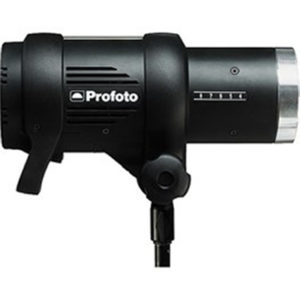
By now you’ve heard that the effective use of light comes down to the quantity of light, the quality of light and the light direction. That same line of thought can also come into play when acquiring lighting tools. For example, how do you know if the light you are about to purchase will provide a sufficient quantity of light? If you go with the least expensive model, will you need more than one? Would you have been better off investing in the top of the line? How can you tell which is the better deal? Here are a few tips when comparing makes and models, starting with flash.
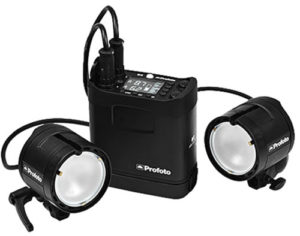
Flashes, like Canon’s Speedlites and Nikon’s Speedlights, are a very popular type of lighting. You can use a guide number (GN) as a reference to help you decide. With ISO 100 as the constant, a guide number is a measure photographers can use to calculate either the required f-stop for any given flash-to-subject distance, or the required distance for any given f-stop. To solve for either of these two variables, one merely divides a device’s guide number by the other.
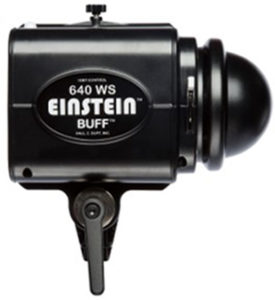
For example, if guide number = f-number × distance, a guide number of 113 (Nikon’s SB5000) would be ideal for f/11 at 10 feet from the subject. If the guide number were 59 (Nikon’s SB300), f/5.6 would be ideal at 10 feet from the subject. That’s a full 2 stop difference from one model to another. Can your style of photography afford the difference? Wanting to use gels? Remember that even a ¼ Color Temperature Orange (CTO) gel will cost you ½ stop.
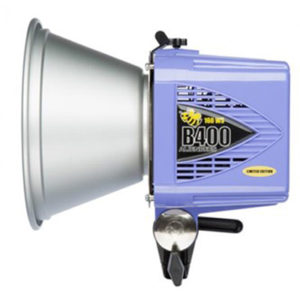
Most manufacturers provide the guide number online or in their brochures and manuals. Here are a few of the most popular models from Canon and Nikon. The bold number indicates the guide number in feet, used in most domestic specifications, with the metric equivalent shown in parentheses ( ).
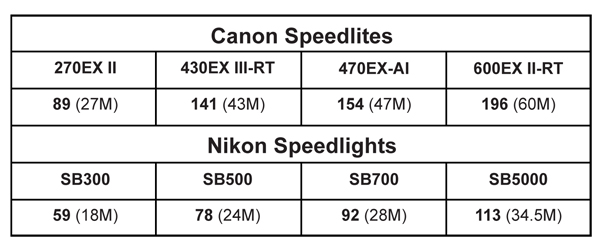
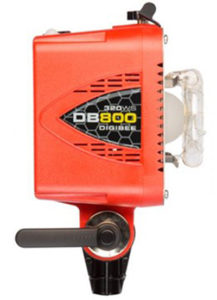
Of course, the high-end flash units will have not just a power advantage, but also additional features that can add to your flexibility, like the ability to automatically zoom the flash head as your lens zooms, a greater ability to pivot to bounce flash, radio control and more.
For Studio or Strobe lights, the standard of measurement is the quantity of electrical energy, measured in watt seconds (Ws). This rating defines the amount of electrical power discharged with each flash. While the actual amount of light produced for a given number of watt seconds varies, depending on the unit’s design, the term provides a reasonable guide to comparative light output, as long as real/true watt seconds are specified. Here is how some of the more popular models compare.
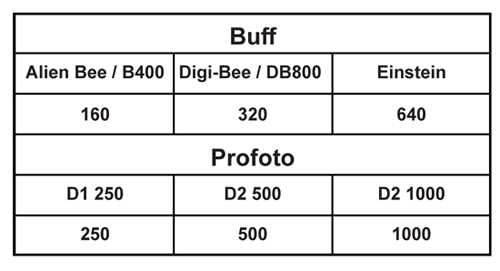 Regardless of brand, using guide numbers (GN) when comparing flash models, or using watt seconds (Ws) when comparing studio or strobe models can lead to a more informed buying decision, and one that could lead to long-term satisfaction, both from you and from your clients!
Regardless of brand, using guide numbers (GN) when comparing flash models, or using watt seconds (Ws) when comparing studio or strobe models can lead to a more informed buying decision, and one that could lead to long-term satisfaction, both from you and from your clients!
Read: Getting Started With Light Modifiers, Part 1
Read: Getting Started With Light Modifiers, Part 2
 Guy T has quickly gained a reputation for a great hands-on experience from his students. While he draws from his ability to make technology simple, you’ll find his class entertaining, fun, and very informative. As a former corporate educator, he knows how to make the learning ‘stick’, with activities that will take your gained knowledge to new skills and abilities. These days he’s a member of the DPPA, an Associate Fellow with the TPPA, and closing in on his Craftsman degree with the PPA in 2018.
Guy T has quickly gained a reputation for a great hands-on experience from his students. While he draws from his ability to make technology simple, you’ll find his class entertaining, fun, and very informative. As a former corporate educator, he knows how to make the learning ‘stick’, with activities that will take your gained knowledge to new skills and abilities. These days he’s a member of the DPPA, an Associate Fellow with the TPPA, and closing in on his Craftsman degree with the PPA in 2018.








